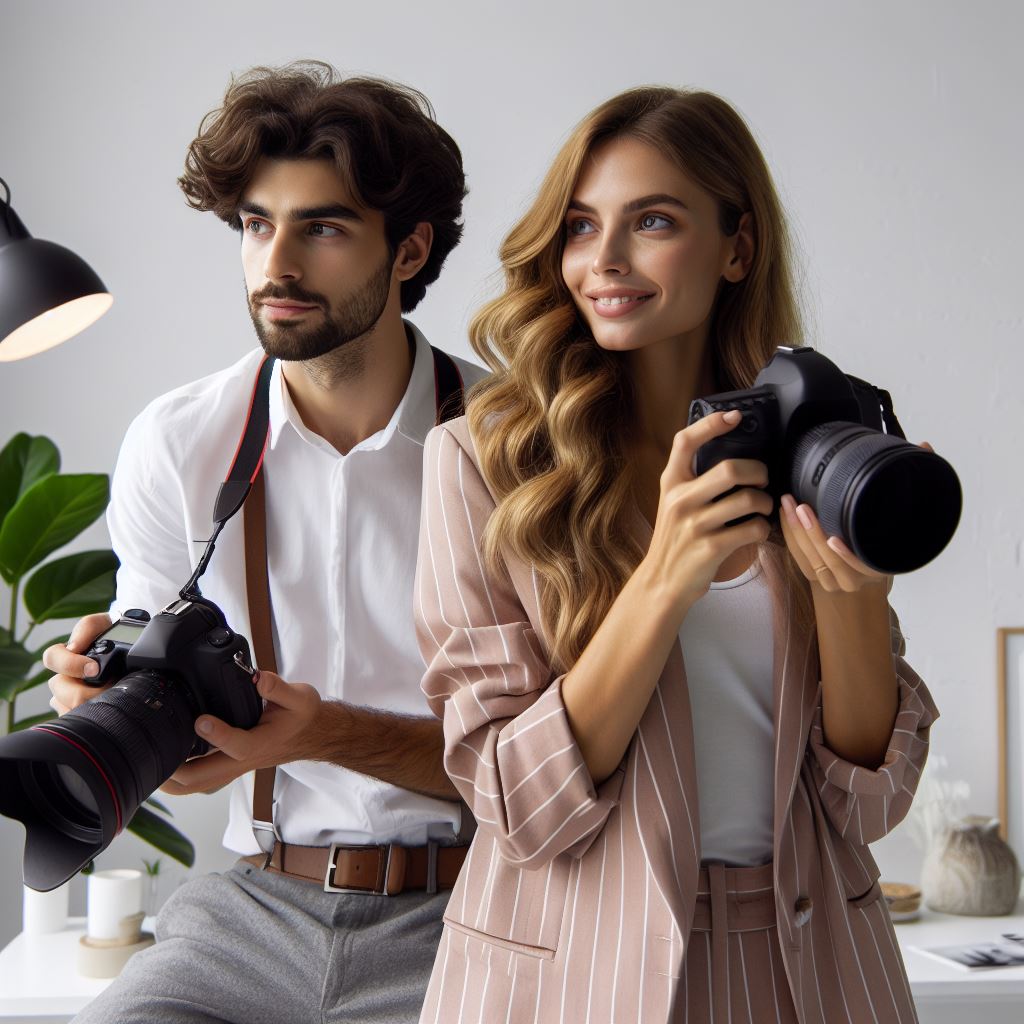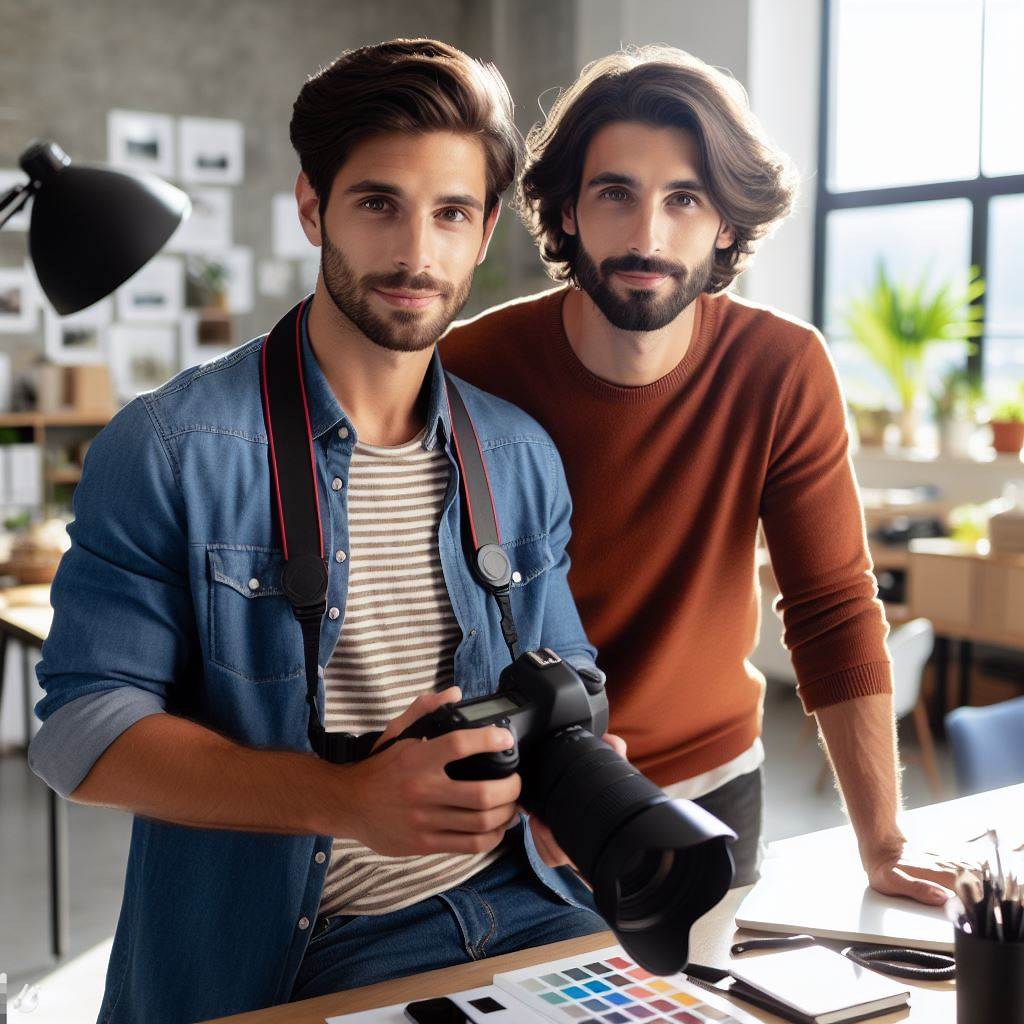Introduction
Welcome, Aussie photographers, to a journey of visual excellence! The heart of remarkable photography lies in the gear you wield, and this blog post is your compass to navigate the sea of choices.
Undoubtedly, the right equipment is your passport to capturing stunning photographs. Whether you’re chasing the sunrise over the Sydney Opera House or framing the rugged beauty of the Outback, having the proper gear elevates your craft.
This blog post will serve as your comprehensive guide, shedding light on the diverse arsenal at your disposal.
From cutting-edge cameras and versatile lenses to sturdy tripods, spacious bags, and essential accessories, we’ll unravel the essentials that will empower you to unleash your creativity in the vast canvas of the Australian landscape.
So, tighten your straps and get ready to discover the gear that will amplify your photographic prowess.
Camera Body
Importance of Choosing a Suitable Camera Body for Photography in Australia
- The choice of a camera body is crucial for photographers in Australia.
- A suitable camera body can greatly enhance the quality of photographs taken in this vast and diverse country.
- Australia offers a wide range of landscapes, wildlife, and outdoor activities, making it essential to have a reliable camera.
- With its extreme weather conditions, including intense heat, strong winds, and dusty environments, durability is vital.
- A camera body with weather sealing capabilities can protect against sand, dust, and moisture, allowing photographers to focus on capturing the perfect shot.
Features to Consider When Selecting a Camera Body
- When choosing a camera body, several features need to be taken into consideration.
- Image quality is crucial, and a higher megapixel count can provide greater detail and clarity.
- Low-light performance is essential for capturing stunning images during sunrise, sunset, or nighttime.
- Look for a camera body with good dynamic range, allowing for detailed shots in both bright and dark areas.
- Fast autofocus and continuous shooting speed are important for capturing action shots, sports, and wildlife photography.
- Having a camera body with a good battery life ensures uninterrupted shooting, especially during remote trips.
- Ergonomics and user-friendly controls contribute to a photographer’s comfort, especially during long hours of shooting.
- Additional features like built-in Wi-Fi or Bluetooth connectivity can simplify the process of sharing images while on the go.
- Compatibility with a wide range of lenses ensures versatility and allows photographers to experiment with different perspectives.
Popular Camera Brands and Models Preferred by Aussie Photographers
- Nikon and Canon are two of the most popular camera brands among Australian photographers.
- Nikon offers a wide range of camera bodies, from entry-level models to high-end professional options.
- Their flagship model, the Nikon D850, is praised for its exceptional image quality, robust build, and weather sealing.
- Canon’s EOS series is also highly regarded, with models like the Canon EOS 5D Mark IV being popular among professionals.
- These cameras offer excellent image quality, advanced autofocus systems, and impressive low-light performance.
- Sony’s mirrorless cameras, such as the Sony Alpha series, have gained popularity for their compact size and innovative technology.
- Their models offer superb image quality, fast autofocus, and excellent low-light capabilities.
- Other brands like Fujifilm and Olympus also have a strong presence in the Australian market, particularly among landscape and outdoor photographers.
- The Fujifilm X-T3 and Olympus OM-D E-M1 Mark III are known for their impressive image quality and weather sealing.
In essence, selecting a suitable camera body is essential for photographers in Australia.
The features to consider, such as weather sealing and image quality, ensure that photographers can capture stunning images in the diverse and challenging Australian environment.
Popular camera brands and models preferred by Aussie photographers include Nikon, Canon, Sony, Fujifilm, and Olympus.
By choosing the right camera body, photographers can enhance their photography and capture the beauty of Australia with precision and quality.
Lenses
Using Different Lenses for Various Photography Genres
Choosing the right lens is crucial as it significantly impacts the outcome of different photography genres.
Portrait photography demands a prime lens to capture crisp, sharp, and shallow depth-of-field portraits.
Landscape photography, on the other hand, benefits from wide-angle lenses to encompass vast scenic views.
Wildlife photography requires telephoto lenses to get close to distant subjects without disturbing them.
Macro photography calls for specialized macro lenses to capture intricate details of small subjects.
Benefits of Wide-Angle, Telephoto, and Prime Lenses
A wide-angle lens allows photographers to capture expansive landscapes, architecture, and group shots.Wide-angle lenses also provide enhanced perspective, making subjects appear larger and closer than they actually are.
Telephoto lenses, with their long focal lengths, are perfect for shooting wildlife, sports, and faraway subjects.
Telephoto lenses compress the background, creating a pleasing bokeh effect and isolating the subject.Prime lenses with fixed focal lengths offer superior image quality and wider maximum apertures for low-light situations
Recommended Lenses for Australian Landscapes or Wildlife
For capturing the breathtaking Australian landscapes, the Canon EF 16-35mm f/4L IS USM is an excellent choice.Its wide-angle range allows you to capture the vastness of the Outback or the stunning coastal cliffs.
For wildlife photography, the Nikon AF-S NIKKOR 200-500mm f/5.6E ED VR offers an impressive zoom range.It allows you to get close to elusive animals without disturbing their natural habitats.
The Sony FE 90mm f/2.8 Macro G OSS lens is ideal for capturing the enchanting beauty of Australian insects and flowers.Its macro capabilities enable extraordinary close-up shots with remarkable details.
Unlocking Creativity: Choosing the Ideal Lenses for Diverse Photography Genres
Choosing the right lenses for your photography needs is essential to unlock your creative potential. Different genres require different lenses to achieve their desired results.
For portrait photography, using a prime lens is crucial to capturing the fine details and producing stunning bokeh.
A wide-angle lens, on the other hand, is perfect for capturing the vastness and beauty of Australian landscapes. It allows you to encompass the grandeur of the Outback or the mesmerizing coastal cliffs in a single frame.
When it comes to wildlife photography, a telephoto lens is a game-changer. Its long focal length allows you to get up close and personal with animals without disturbing them.
You can capture the grace of a kangaroo hopping through the bush or the majesty of a bird perched on a branch with astonishing clarity.
The compressing effect of telephoto lenses also helps to isolate the subject from the background, creating eye-catching images with beautiful bokeh.
Unlocking the World of Macro Photography: Choosing the Right Lens for Australian Wonders
If you have a passion for macro photography and want to capture the intricate details of Australian insects or flowers, a dedicated macro lens is a must.
The Sony FE 90mm f/2.8 Macro G OSS lens is a fantastic choice for this genre. Its exceptional macro capabilities allow you to capture the smallest of details, revealing the fascinating world of tiny creatures and delicate flora.
Ultimately, the choice of lenses comes down to personal preference and the specific photography genres you enjoy.
Experimenting with different lenses will help you understand their unique characteristics and unlock new possibilities for your photography.
So grab your gear, head out to the stunning Australian landscapes or immerse yourself in the wilderness, and let your lenses do the talking!
Your Personalized Career Strategy
Unlock your potential with tailored career consulting. Get clear, actionable steps designed for your success. Start now!
Get StartedRead: Music Production: A Guide for Aussies
Tripods and Stabilization
The usefulness of tripods and other stabilization equipment in achieving sharp and steady images
- A tripod is an essential tool for photographers to ensure sharp and steady images.
- Using a tripod eliminates camera shake, resulting in clearer and more focused photographs.
- Stabilization equipment such as tripods allows photographers to take long-exposure shots without blurriness.
- Tripods provide stability in situations where it is not possible or practical to handhold the camera.
- By using a tripod, photographers can experiment with different compositions and framing options.
- Investing in a quality tripod is crucial for professional photographers who prioritize image sharpness.
- Without a tripod, capturing low-light scenes or shooting in challenging conditions can be extremely difficult.
The types of tripods available and their suitability for different photography styles
- Standard tripods are the most common type and are suitable for a wide range of photography genres.
- Travel tripods are lightweight and compact, ideal for photographers who are constantly on the go.
- Professional tripods are heavy-duty, providing stability and durability for demanding photography situations.
- Mini tripods are small and portable, great for smartphone photography or when traveling light.
- Flexible tripods have bendable legs that can be attached to various surfaces, offering unique shooting angles.
- Carbon fiber tripods are lightweight yet strong, perfect for outdoor and nature photographers.
- Based on shooting style and preferences, photographers should choose a tripod that suits their needs.
Alternative stabilization options such as monopods and camera gimbals
- Monopods are single-legged supports that provide stability while allowing more mobility than tripods.
- They are suitable for photographers who need to move quickly while still achieving some level of stability.
- Camera gimbals use motors to stabilize the camera, resulting in smooth and steady footage.
- Gimbals are commonly used in videography, allowing photographers to capture fluid and professional-looking footage.
- For photographers interested in videography or capturing action shots, gimbals can be a valuable tool.
- Ultimately, the choice between tripods, monopods, or gimbals depends on the specific needs of the photographer.
Read: Australian Music Awards: A Closer Look

Filters
Purpose and Benefits of Using Filters in Photography
- Filters are essential accessories that help photographers to achieve different effects and improve their images.
- They are transparent or translucent materials that are placed in front of the camera lens.
- Filters can alter colors, reduce reflections, control light exposures, and protect the lens from scratches.
- By using filters, photographers can have more control over their final images and achieve creative effects.
- They can save time and effort in post-processing by achieving desired effects directly through camera settings.
Various Types of Filters
- Polarizing Filters: These filters reduce glare and reflections, enhance colors, and darken skies in landscape photography.
- Neutral Density (ND) Filters: ND filters reduce the amount of light passing through the lens, allowing longer exposures.
- Graduated Filters: These filters have a gradient effect, with one part of the filter being darker than the other.
- Color Filters: Color filters are used to enhance or alter specific colors in a photograph.
- Infrared Filters: These filters block visible light and allow only infrared light to pass through to capture unique images.
Examples of Enhancing Photographs in the Australian Context
- Polarizing Filters: In the harsh Australian sunlight, a polarizing filter can reduce glare and enhance the blue sky.
- ND Filters: Long exposure photography of waterfalls or waves crashing against rocks can create a smooth and ethereal effect.
- Graduated Filters: When capturing landscapes with a bright sky and darker foreground, a graduated filter can balance exposures.
- Color Filters: In the vibrant Australian outback, using a warm color filter can accentuate the red tones of the desert.
- Infrared Filters: The unique flora and fauna in Australia can be captured using infrared filters, revealing a surreal and otherworldly perspective.
Read: How to Network in Australia’s Music Scene
Storage Solutions
Stress the importance of having reliable storage options for photographers
- Without reliable storage solutions, photographers risk losing their valuable images and memories.
- Investing in the right storage options can prevent data loss and provide peace of mind.
Different types of storage solutions such as memory cards, external hard drives, and cloud storage
- Memory cards are portable and offer immediate storage, but they have limited capacity
- External hard drives provide large storage capacities and can be easily connected to computers.
- Cloud storage allows photographers to store their images online, ensuring accessibility from anywhere.
Recommendations for secure and convenient storage solutions suitable for Aussie photographers
- SanDisk Extreme PRO SDXC memory cards offer high-speed performance and large storage capacities.
- Western Digital My Passport portable external hard drive is reliable and offers ample storage.
- Dropbox and Google Drive are popular cloud storage options that provide secure storage and easy access.
- Synology NAS (Network Attached Storage) offers both local and remote file access for professional photographers.
In general, photographers must prioritize having reliable storage solutions to protect their precious images.
By investing in options like memory cards, external hard drives, or cloud storage, Aussie photographers can ensure the security and accessibility of their work.
Consider the recommended products mentioned above to find the most suitable storage solution for your photography needs.
Read: The Evolution of Australian Music Genres
Accessories and Extras
Australian photographers have a range of additional gear that can elevate their experience and enhance their creativity.
Camera Bags
Investing in a high-quality camera bag is essential for keeping all your equipment safe and organized. Look for bags with padded compartments and waterproof materials.
Lens Cleaning Kits
To ensure that your lenses are always in optimal condition, consider getting a lens cleaning kit. These kits usually include a blower, brush, lens cleaning solution, and microfiber cloth.
Remote Shutter Releases
Remote shutter releases allow photographers to capture photos without physically touching the camera, preventing any potential camera shake. This is particularly useful for long exposure shots or self-portraits.
Tripods and Monopods
A tripod or a monopod is a must-have accessory for landscape and low-light photography. It helps stabilize the camera and allows for creative compositions and longer exposure times.
Filters
Filters can dramatically enhance your photographs by controlling light and reducing glare. Consider investing in circular polarizers, neutral density filters, or graduated filters for different shooting situations.
External Flash Units
An external flash unit can significantly improve the quality of your photographs, especially in low-light situations. Look for units with adjustable power settings and the ability to rotate the flash head.
Spare Batteries and Battery Charger
When shooting outdoors, having spare batteries and a battery charger is crucial. Running out of power can be frustrating, so always carry extra batteries and keep them charged.
Memory Cards
Never underestimate the importance of having an ample supply of memory cards. Opt for high-capacity cards with fast writing speeds to avoid missing any shots.
Stand Out with a Resume That Gets Results
Your career is worth more than a generic template. Let us craft a resume and cover letter that showcase your unique strengths and help you secure that dream job.
Get HiredCamera Rain Cover
When photographing in wet or unpredictable weather, a camera rain cover is essential to protect your gear from moisture and ensure it remains functional and undamaged.
Wireless Memory Card Readers
Wireless memory card readers allow photographers to transfer images from their memory card to their computer or smartphone without the need for cables, providing convenience and efficiency.
Investing in the right accessories and extras can greatly enhance the overall photography experience for Aussie photographers.
Whether it’s a sturdy camera bag, lens cleaning kit, or spare batteries, each item plays a vital role in ensuring that photographers are prepared for any situation.
With the additional gear in their arsenal, photographers can focus on capturing stunning images and unleashing their creative potential.
Explore Further: Theatre Acting vs. Film: What Aussie Actors Need
Conclusion
In closing, Aussie photographers must prioritize essential gear. A versatile camera, such as a Canon EOS R5, ensures stunning shots. Invest in quality lenses, like the Sigma 24-70mm f/2.8, for diverse perspectives.
Don’t overlook a sturdy tripod, such as the Manfrotto Befree Advanced, for stability in various terrains. Portable lighting, like the Godox AD200Pro, is vital for perfect exposure.
Explore drone options, such as the DJI Mavic Air 2, to capture breathtaking aerial views.
Protect your gear with a reliable camera bag, such as the Lowepro ProTactic BP 450 AW II. Lastly, mastering post-processing tools like Adobe Lightroom enhances the final product.
Emphasizing the importance of investing in these tools is crucial for elevating photography skills in the diverse landscapes of Australia. Encourage continuous exploration and experimentation to unlock the full potential of your photography journey.




